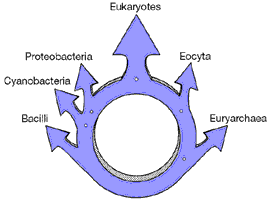http://www.nature.com/news/2006/060213/full/060213-4.html
The cane toad was artificially introduced in australia and wreaked havoc with the local fauna.
Scientists have been studying how fast it is migrating and they were surprised that these large toads could travel up to 1.8km per night! Moreover they prefer to move along roads. These large toads do not jump but crawl and the scientists were quite surprised they could move such long distances.
They compared modern toads with specimens in museums and records and such and found that they have become '25% leggier and fivefold faster over a 60-year period'.
There you have it. Evolution right in front of your eyes (if you live in australia).
The cane toad was artificially introduced in australia and wreaked havoc with the local fauna.
Scientists have been studying how fast it is migrating and they were surprised that these large toads could travel up to 1.8km per night! Moreover they prefer to move along roads. These large toads do not jump but crawl and the scientists were quite surprised they could move such long distances.
They compared modern toads with specimens in museums and records and such and found that they have become '25% leggier and fivefold faster over a 60-year period'.
Although insects and bacteria quickly adapt to changing circumstances, Skelly says this study is one of the first known examples of a vertebrate rapidly evolving in a new environment. "People have this deep-seated feeling that vertebrates don't evolve on of these sorts of timescales. But this work shows that it can happen," says Skelly. Cane toads typically start breeding at the age of one year, and can produce some 200,000 eggs in an average ten-year lifespan.
There you have it. Evolution right in front of your eyes (if you live in australia).


